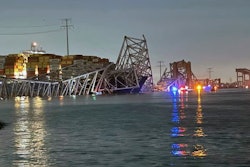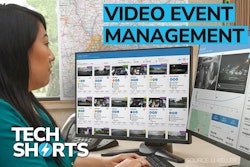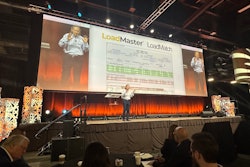
If the near-term predictions of autonomous driving for both passenger cars and commercial vehicles are to be realized, it will require software, hardware systems and technologies stacked in layers and working in tandem to ensure safety in Level 3-5 autonomous applications.
Vision camera systems, radar and lidar are predominant technologies that autonomous vehicle suppliers employ to build reliable platforms that could allow a vehicle to identify and react to an object in the road in time to avoid an accident.
In Europe, new regulations have doubled the speed (from 40 to 81 mph) at which autonomous vehicle systems must detect a 10-centimeter object at 150 meters. Many of today’s systems, particularly lidar and monocular vision systems, can’t meet the requirement at the high end of the speed range.
Enter Nodar, a stereo vision system company that provides a long-range 3D camera software system that has a range from 6 to 1,000 meters. The software for the aptly named Hammerhead system triangulates data from two cameras to calculate object depth. The farther the span between the two cameras, like the eyes on a hammerhead shark, the better the range and depth-sensing accuracy the system can perform. Hammerhead also uses an algorithm to automatically calibrate the two cameras, meaning they can be placed anywhere on the vehicle and not mounted to a single rigid structure.
“The range of these systems and the accuracy is proportional to the distance between the cameras,” explained Nodar COO Brad Rosen at a House of Journalists press conference at the IAA Mobility Show in Munich, Germany. “And so if the cameras are very close, the range is very close.”
What allows the Hammerhead system to meet the new European object detection regulations is its new GridDetect feature. GridDetect is capable of detecting and tracking objects in real time as much as 350 meters away and objects at a height of just 10 centimeters at 150 meters.
Leaf Jiang, Nodar CEO, said the company’s software can support any major automotive camera hardware system, and Nodar currently is working with Nvidia for image processing.
GridDetect uniquely takes our super high resolution point clouds and turns it into actionable data,” said Rosen. “We're supplying the rich set of data and now the bounding boxes and speed and direction of the objects.
Rosen said the Hammerhead with GridDetect has two to four times the range of lidar and gets 30 times more data in nighttime conditions. “What is the state of the art today, whether it's lidar or monocular sensors, they are really unable to detect objects at long range,” he said. “And so this is a sweet spot in which Nodar has settled long range small object detection.”
Nodar claims the system can work in adverse conditions including low light, heay rain, snow and fog.
Images from the left and right five- megapixel cameras are aligned for every single frame at a rate of 15 frames per second, and the software calculates the distance to every pixel. “That's 75 million calculations per second or a million points, that we're outputting per second,” said Rosen.










